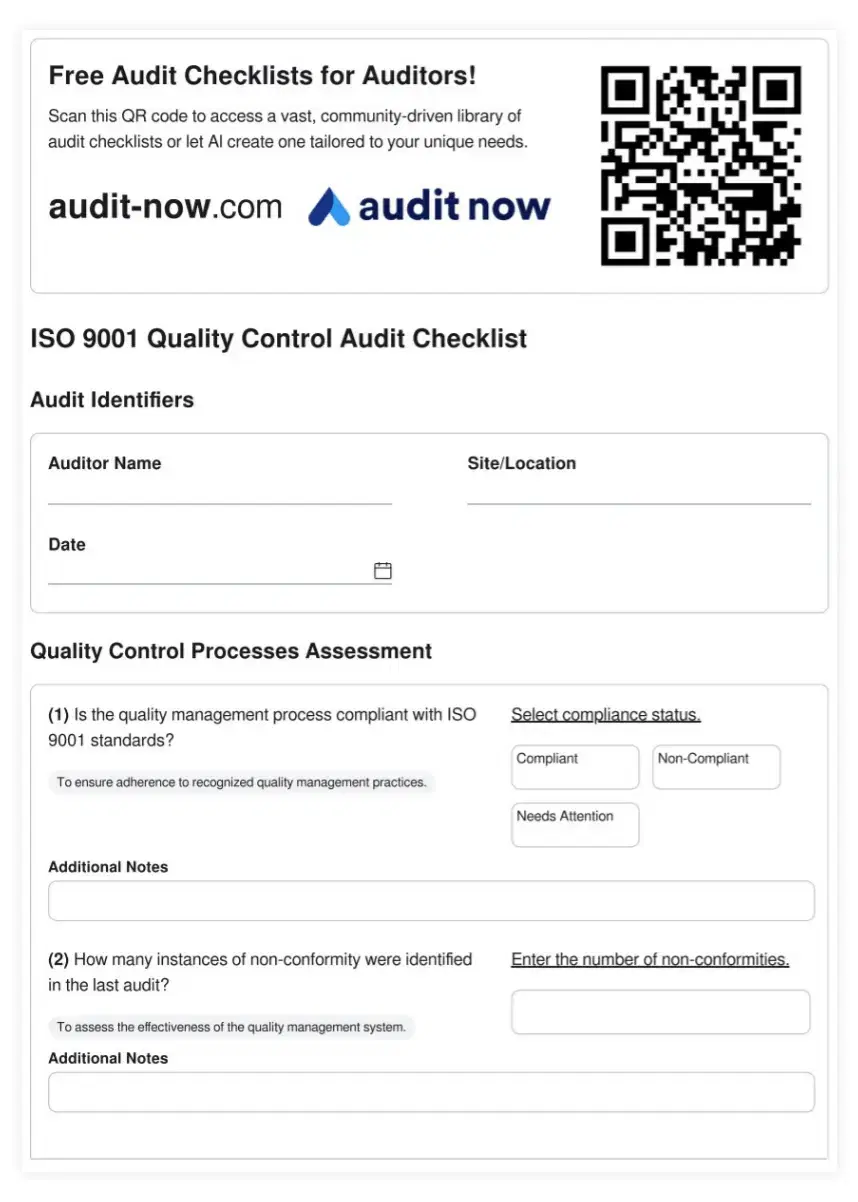Risk Management Officer Checklists

Featured Checklist

Credit Risk Management Audit Checklist for Financial Institutions
In the dynamic landscape of financial services, effective credit risk management is crucial for maintaining institutional stability and regulatory compliance. This Credit Risk Management Audit Checklist is designed to help financial institutions evaluate and enhance their credit risk assessment, monitoring, and mitigation practices. By systematically reviewing key areas of credit risk management, organizations can identify potential vulnerabilities, ensure adherence to regulatory requirements, and implement best practices in credit risk governance. This comprehensive checklist serves as an essential tool for strengthening risk management frameworks, improving loan portfolio quality, and safeguarding against potential credit losses in an ever-changing economic environment.
Risk Management Officer Operational Overview
Risk Management Officers face many challenges in their day-to-day work. They must stay on top of ever-changing rules, spot possible threats, and make sure the company follows all the rules. It's a big job that needs careful planning and quick thinking.
When risk management is done well, it helps the whole company. It keeps the business safe from harm, builds trust with customers and partners, and helps the company grow. Good risk management is key to making smart choices and keeping the business strong.
Quality management and risk management go hand in hand. Both aim to make the business run smoothly and avoid problems. Let's look at why audits are so important in risk management.
Core Audit Requirements & Checklist Importance
Audits are a key part of risk management. They help find weak spots, check if rules are being followed, and show where things can be made better. A good audit looks at all parts of risk management, from how risks are spotted to how they're dealt with.
Checklists are very useful for audits. They make sure nothing is missed, keep things consistent, and help auditors work faster. With a good checklist, auditors can focus on finding real issues instead of worrying about forgetting something.
Following rules is a big part of risk management. Audits help make sure the company is doing what it should. This keeps the company safe from fines and other problems that can happen when rules aren't followed.
- Risk Assessment Process: Check how risks are found and rated
- Control Measures: Look at how risks are managed
- Reporting Systems: Check if risk info is shared well
- Training Programs: See if staff know about risks
- Emergency Plans: Make sure there are plans for big problems
Industry-Specific Risk Management Challenges
Each industry has its own risk management challenges. In finance, there's a lot of focus on market risks and fraud. Healthcare worries about patient safety and data protection. Tech companies need to watch out for cyber threats and fast changes in their field.
Best practices in risk management often involve using data to spot trends, having clear plans for different types of risks, and making sure everyone in the company knows their part in managing risks. It's also important to keep learning and updating risk plans as things change.
Quality control in risk management means regularly checking that risk processes are working well. This might involve testing emergency plans, checking risk reports for accuracy, and making sure risk training is up to date. Good quality control helps catch problems early before they become big issues.
Optimizing Risk Management Processes
To make risk management better, many companies are using new tech tools. These can help spot risks faster, make better predictions, and share info more easily. For example, some companies use AI to scan lots of data and find possible risks that humans might miss.
Good risk management isn't just about avoiding bad things. It's also about finding good opportunities. By understanding risks well, companies can make smart choices about new projects or markets. This balanced approach helps companies grow while staying safe.
Measuring how well risk management is working is important. Some key things to track might be how many risks were spotted and dealt with, how much money was saved by avoiding problems, and how quickly the company can respond to new risks. Regular reports on these measures help show the value of good risk management.
Digital Transformation with Audit Now
Audit Now offers smart tools to make risk management easier and better. Our AI-powered checklists learn from your audits to get smarter over time. This means you're always using the most up-to-date and relevant checks for your industry.
With Audit Now, teams can work together in real time, no matter where they are. This makes it easy to share info, spot issues quickly, and make fast decisions. Plus, our big library of templates means you don't have to start from scratch – you can use tried-and-tested checklists for all kinds of risk management tasks.
Ready to make your risk management better? Check out our risk management templates at audit-now.com/templates/. And if you want a custom checklist just for you, try our AI checklist maker at audit-now.com/generate-ai-checklist/.
Most Popular 10 Risk Management Officer Checklists
Hotel Security and Risk Management Audit Checklist
SAE AS5553 Supplier Risk Assessment Checklist
SAE AS5553 Supplier Risk Assessment Checklist